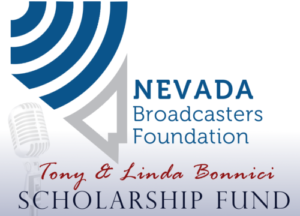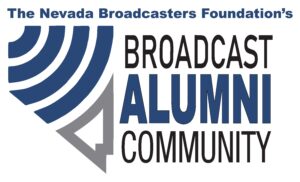
This week brought the news that the Biden administration has nominated Anna Gomez for the open Democratic FCC seat that Gigi Sohn was to fill until she asked that her nomination be withdrawn in March, after a prolonged debate over her confirmation. Gomez is experienced in government circles, having worked at NTIA (a Department of Commerce agency dealing with federal spectrum use and other communications matters) and recently at the State Department preparing for international meetings about communications issues. She also has a history in private law firm practice. Together with her nomination, the President renominated Commissioners Starks and Carr. Starks’s term has already expired but he continues to serve under the allowable one year carry-over. Carr’s term will expire at the end of this year. If all three nominees are confirmed at some point this year, the FCC would, for the first time in the Biden administration, be at full strength. What issues would a full FCC be able to tackle?
In January, we looked ahead at some of the regulatory issues that are unresolved for broadcasters, and many remain on the table. So let’s look at those issues again. Perhaps the most significant issue is the resolution of the 2018 Quadrennial Review to assess the current local broadcast ownership rules and determine if they are still in the public interest. As we wrote in December, the FCC has already started the 2022 review, as required by Congress, even though it has not resolved the issues raised in the 2018 review. This has brought a rebuke from the NAB, which has sought a “mandamus” from the US Court of Appeals – mandamus being an order from the court telling the FCC to fulfill its statutory obligation to complete the Quadrennial Review that should have been done by the end of 2022. Even if such an order is granted, the court will not tell the FCC how or what to decide, but only to decide the issues. So a new FCC would have to review the open issues. What are those issues?
For the radio industry, they include the potential relaxation of the local radio ownership rules. As we have written, some broadcasters and the NAB have pushed the FCC to recognize that the radio industry has significantly changed since the ownership limits were adopted in the Telecommunications Act of 1996, and local radio operators need a bigger platform from which to compete with the new digital companies that compete for audience and advertising in local markets. Other companies have been reluctant to endorse changes to the ownership rules – but even many of them recognize that relief from the ownership limits on AM stations would be appropriate. Those positions were echoed in the comments filed in the newly started 2022 Quadrennial Review filed back in March.
The Quadrennial Review also looks at the dual network rule that currently forbids the common ownership of two of the Top 4 TV networks. Also under consideration is the potential for the combination of two of the Top 4 television stations in any local market. Common ownership of such stations is only permitted now through what is essentially a waiver process. The FCC has asked if there are specific criteria that could be adopted to evaluate those requests (e.g., a combination of the 3rd and 4th stations would be allowed if their market share did not exceed a specific percentage of the market – or the share of the higher rated stations in the market) so that applicants would have more certainty about whether a proposed combination would be allowed. These issues are all fully briefed and argued to the FCC and are just awaiting an FCC decision.
While not directly part of the Quadrennial Review process, the question of the national cap on television ownership could be a subject that a new FCC could review. Television companies are limited from having an attributable interest in television stations reaching more than 39% of national television households. There are several television companies that have exceeded that threshold by relying on the “UHF Discount” that counts UHF stations as reaching only half the households in their markets, a legacy from the days of analog television broadcasting, when VHF stations (those operating on Channels 13 and below) were the preferred means of transmission. Once the conversion to digital occurred, the tables were reversed, as UHF channels are generally acknowledged to have superior transmission capabilities, an advantage that continues in the new ATSC 3.0 “Next Gen TV” transmission standard.
Recognizing that reversal, the last Democratic Commission abolished the UHF discount (see our article here) only for that action to be reversed by the Pai administration (see our article here). The Commission under Republican Chairman Pai questioned whether the FCC had the authority to repeal the UHF discount, as that discount had been in place when Congress enacted the 39% cap. That administration also started a proceeding to review the national ownership cap for television companies, asking if the FCC could amend that cap on its own (or whether it needs authority from Congress) and, if the FCC has such authority, what the limits on national ownership should be. That proceeding has never been resolved, and this new Commission has not yet been faced with a large acquisition that would for the first time put any company over the limit that would exist but for the UHF discount. The recent TEGNA case, controversial for other reasons, did not raise this issue. With a full Commission, this issue may well be considered.
Also on the horizon for TV regulation are several open proceedings to look at the transition to ATSC 3.0. One that particularly seems ripe for decision is the Further Notice of Proposed Rulemaking seeking comment on the interplay between multicast channels and the ASTC 3.0 conversion – particularly in the context of the legal responsibility for “lighthouse” ATSC 1.0 programming streams left behind on the digital multicast stream of a host station by a station that has converted to the new transmission standard. The Pai Commission proposed to make clear that the legal responsibility for the lighthouse signal would be the responsibility of the programmer, not the host station (see our article here from an earlier stage in the proceeding discussing the issue). While that seems like a commonsense standard, issues about cable carriage and multiple multicast streams have clouded the proceeding, and it has yet to be resolved. Also pending is a proceeding to determine when to terminate the requirement for the duplication of programming of the primary broadcast stream on both the Next Gen and lighthouse legacy digital streams.
Also pending is the final resolution as to whether the “Franken FMs” or “FM6 stations” – LPTV stations operating on TV channel 6 with an analog audio service that can be received on FM radios at 87.7, will be allowed to continue to operate (see our article here).
EEO issues for both radio and TV also could be considered by a full-strength FCC. The FCC has requested comments on bringing back the annual EEO Form 395, reporting on the race and ethnicity of broadcast employees (see our article here). A rulemaking initiated by the last Commission looking at broader reform of the EEO rules is also still outstanding and could be given further consideration (see our article here).
Political broadcasting is always an issue. The requirement for quicker disclosure of advertising orders placed by political candidates and issue advertisers has been brought to the foreground by the hundreds of consent decrees signed by broadcasters across the country in past two years (see our articles here and here). Disclosure requirements about the funding of political advertising backers has also been considered in previous administrations – and could make a return in this one (see our articles here and here). Watch for other clarifications of the political broadcasting rules that could come this year in the relative lull between election years.
For radio, there are various technical proposals that are still on the table for possible consideration. Proposals for a Class C4 FM service (here) and the limited origination of programming on FM boosters through “zonecasting” (here) are pending and could be given further consideration. The C4 proposal is only at the Notice of Inquiry stage, so any final rules, before being adopted, would have to be put out for public comment in a Notice of Proposed Rulemaking. In contrast, the zonecasting proposal has already been the subject of a Notice of Proposed Rulemaking. The FCC’s zonecasting proposals have been vigorously contested, opposed by many prominent broadcast companies while aggressively supported by the company that developed the system. This proceeding could be considered by the Commission this year. Proposals for increased power for HD subchannels for FM radio are also on the table for possible action later this year.
Enhanced public file obligations have also been proposed to obligate broadcasters to use a standard certification form for buyers of program time on a station to assess whether those buyers are acting as agents of a foreign government, with the FCC proposing that these certifications be added to the public file whether or not the programmer says that they have any connection to the foreign government (see our article here). The FCC is also considering requiring broadcasters to certify regularly as to the steps they are taking to secure their EAS systems from hacking and other online breaches (see our articles here and here).
These are just some of the issues that could be considered by a full-strength FCC. As we’ve seen in the past, new issues that we have not even considered could pop up at any time. Watch in the next few months as Congress holds hearings on the new nominations to see what other issues are raised in these confirmation proceedings. Some have speculated that the confirmation process could be completed early this summer but, as we’ve seen with that process already during this administration, there can always be surprises, and the process can change over time. So keep watching!
Courtesy Broadcast Law Blog


